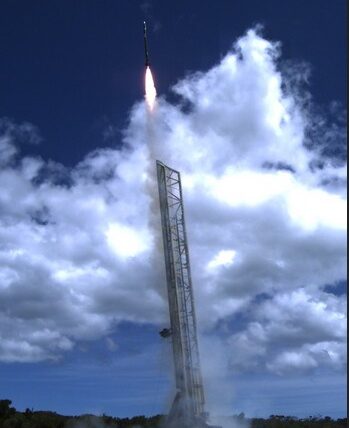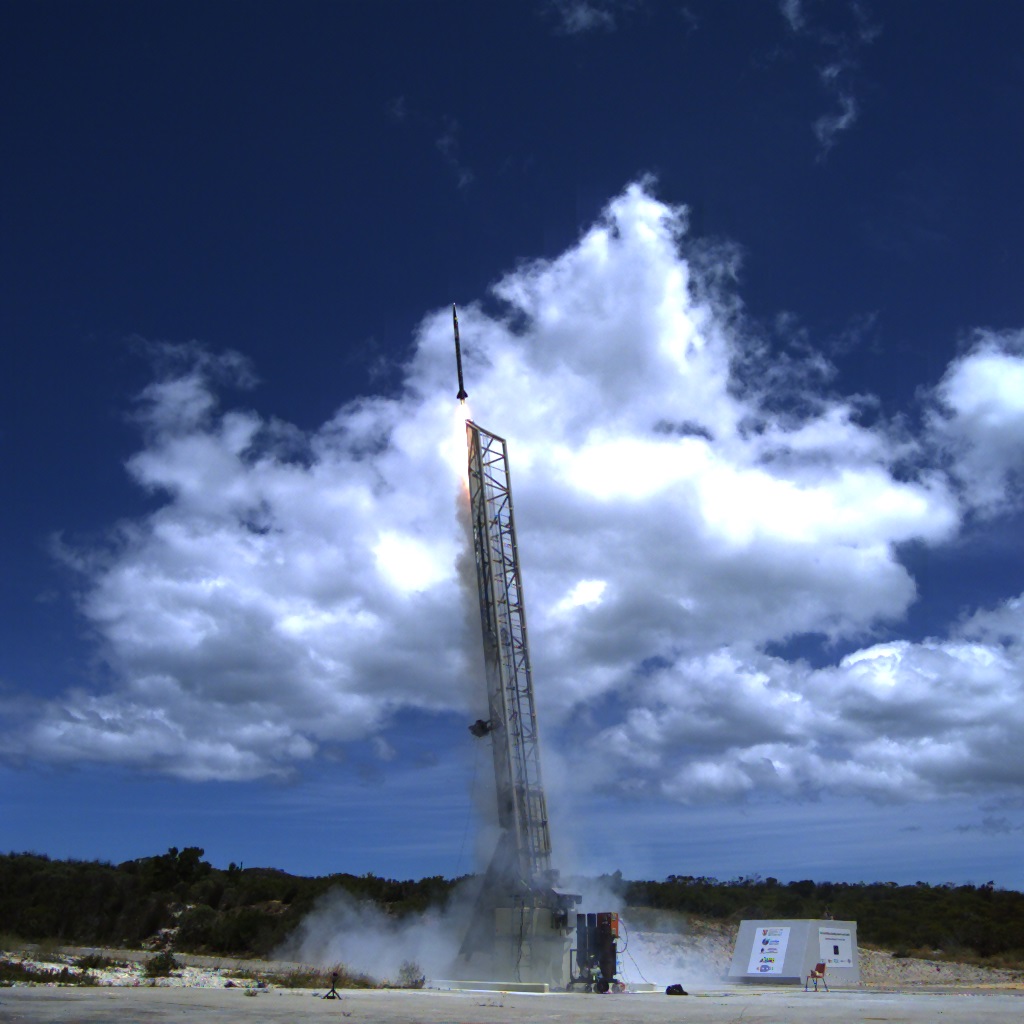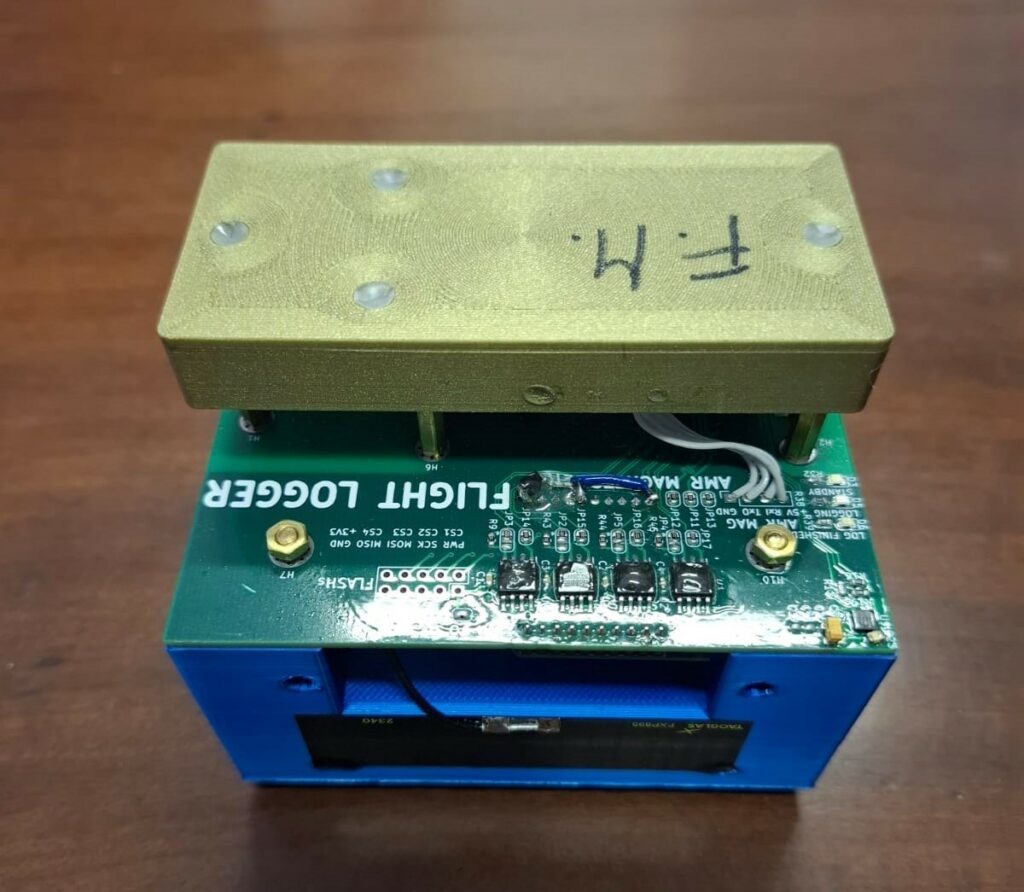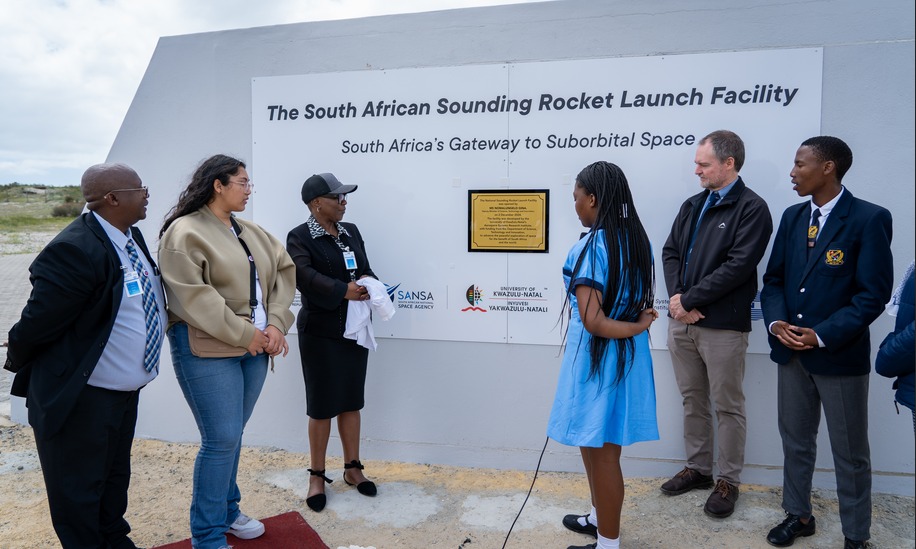
December 12, 2024
In a landmark event for South Africa’s aerospace sector, the South African National Space Agency (SANSA) successfully tested its specialised payload on a suborbital sounding rocket launched at the newly unveiled rocket gantry, located at the Denel Overberg Test Range facility in Arniston. The payload successfully measured the Earth’s magnetic field and flights data during the flight which lasted for approximately 400 seconds.
Rocket Gantry
The new rocket gantry was inaugurated on 3 December 2024 by Deputy Minister of Science, Technology and Innovation Ms. Nomalungelo Gina. Its development was funded by the Department of Science, Technology and Innovation (DSTI) and implemented by the Aerospace Systems Research Institute (ASRI) at the University of KwaZulu-Natal (UKZN) “This gantry is a national asset that will be used to launch suborbital rockets built by ASRI,” Gina said. “It can also accommodate much larger solid-propellant vehicles of the type operated by space-faring nations, including other potential international clients on the continent and worldwide.” The new facility is designed to support next-generation aerospace projects, enabling the testing and preparation of advanced rocket systems while fostering critical research initiatives. Its sophisticated launch gantry features a state-of-the-art aiming and control system, allowing for 360-degree horizontal rotation and vertical elevation adjustments. This ensures pinpoint accuracy and adaptability to factors such as wind direction on launch days.
Suborbital Rocket
Unlike orbital launch vehicles that can steer themselves, suborbital rockets are unguided and must therefore be launched off a gantry that can be accurately aimed, depending on the required flight trajectory, mission requirements and safety risks. The newly launched facility was put through its paces, successfully launching the sounding rockets the Phoenix-1D on the 2 December and Phoenix-1E on 4 December 2024.
Prof. Mike Brooks, Director of ASRI, highlighted that the facility is equipped for advanced rocket testing, propulsion system development, and flight-testing new technologies. It also supports research in aerospace innovation, ensuring safe and efficient operations.
The gantry, and the rockets performed well during testing, reaching altitudes of 16,6 km and 11,9 km, respectively. One of the vehicles transmitted magnetometer data sampled during the flight back to the ground via a telemetry link, giving South African National Space Agency scientists an additional method of sampling the Earth’s magnetic field. UKZN is among the top universities globally in terms of its ability to engineer high-performance hybrid rockets.
Specialised Payload
The SANSA-designed payload, developed in collaboration with the Department of Measurement at the Czech Technical University in Prague, was a centrepiece of the rocket’s mission. Equipped with an advanced Anisotropic Magneto Resistive (AMR) magnetometer, additional magnetometers, accelerometers, gyroscopes, and telemetry systems, the payload was designed to capture precise magnetic data during its suborbital journey.
The rocket’s flight lasted approximately 400 seconds, during which the SANSA telemetry system successfully transmitted real-time magnetic and flight data. These data sets will contribute to SANSA’s ongoing efforts to advance magnetic research and bolster its position in the global scientific community.
The unveiling of the national sounding rocket facility is a significant step forward in realising South Africa’s vision of a vibrant and sustainable space ecosystem. As the facility begins operations, it will not only elevate South Africa’s position in global space research, but also inspire the next generation of space scientists, engineers, and innovators.





